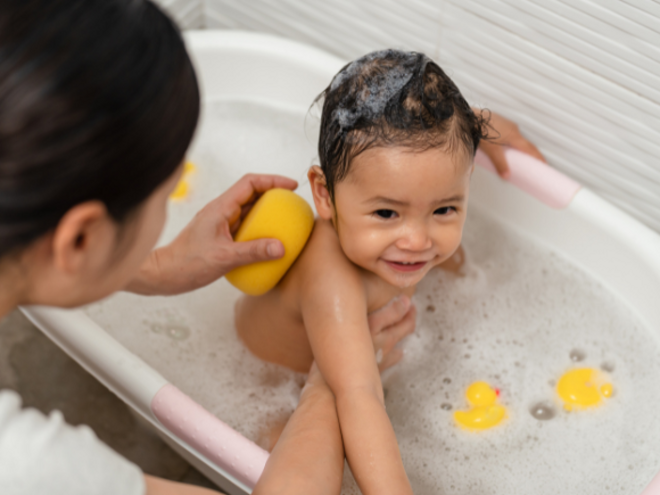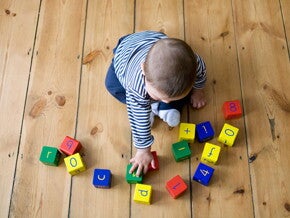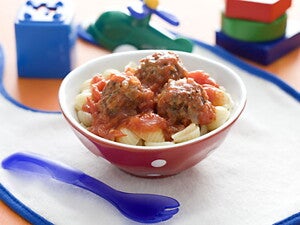
Bath Time Fun: Creative Ways to Make Bath Time Exciting for Toddlers
Bathing your toddler is not only essential for maintaining their hygiene but also offers a wonderful opportunity for play and bonding.
We understand that bath time can be both an enjoyable and challenging experience for you and your little one. Compared to bathing your baby, toddler bath time is a lot more active for both parents and child and can be a fantastic way to support their growth and development. At this age, your toddler will now be splashing and playing around, which is why engaging toys and games at bath time are a helpful tool for parents trying to keep their little one clean and happy. Making bath time fun, especially if your little one hasn’t always enjoyed baths is so important. Some toddlers may get anxious or nervous being around water or have a sensory aversion to water which makes bath time a little more difficult for everyone. Understanding your little one’s needs is crucial, it’s so important not to force your toddler to take a bath. Be patient while helping your little one learn to enjoy baths. In this article, we will share some essential tips and tricks to make bath time safe, enjoyable, and fun.
How often should you bathe your toddler?
Finding the right balance for bath time is key. You want to keep your toddler clean and fresh without overdoing it. As your baby grows into a toddler and becomes more active and starts exploring, they may need more regular baths to stay clean and comfortable, so you will need to adjust their bath frequency accordingly.
The ideal frequency for bathing toddlers depends on their age, activity level, and skin condition. Generally, it's recommended to bathe your toddler two to three times a week. This allows their skin to maintain its natural oils, which help protect against dryness and irritation.
However, there are times when more frequent baths may be necessary. If your toddler has been particularly active or has gotten messy with food or dirt, it's a good idea to give them a bath that day. Additionally, if your child has sensitive skin or is prone to rashes, more frequent baths may be needed to keep their skin clean and prevent irritation.
Remember, bath time is not just about hygiene but also about bonding and relaxation. Use this time to engage with your toddler through play and gentle massage. Introduce them to new textures, toys, and songs to make bath time an enjoyable experience for both of you.
How to keep bath time safe for your toddler
Bath time can be a fun experience for both you and your little one, but it's essential to prioritise safety. Toddlers are much more active and physically curious than babies, and as such, new hazards can arise during bath time.
Safety considerations for toddler bath time
- Never leave your toddler unattended in the bath, even for a moment. Little ones can drown in as little as an inch of water, so it's crucial to keep a close eye on them at all times.
- To prevent slips and falls, consider using a non-slip bathmat or adhesive strips on the bottom of the tub. This will provide extra grip and stability for your toddler. Also, have plenty of towels on hand for the inevitable wet floor!
- Ensure the bath water is at a safe temperature. The ideal water temperature is around 37 degrees celsius. Use a bath thermometer to check the water temperature before placing your little one in the tub.
- Avoid using bath seats or rings that can give a false sense of security. These devices are not a substitute for constant supervision and can pose a drowning hazard.
- Keep all bath essentials, such as shampoo, soap, and towels, within your reach but out of your child’s reach. This will prevent them from accidentally grabbing or knocking over potentially harmful substances.
By following these safety tips, you can create a safe and enjoyable bath time experience for your little one.
Fun and educational bath games for toddlers
Bath time is not just about getting clean; it's also a fantastic opportunity to engage in play, learn new skills, and bond with your toddler. Bath games can be as simple or as creative as you choose, and keeping your toddler engaged needn’t have to be expensive or too time consuming. By incorporating toys and games you can make bath time a fun and enjoyable experience for both you and your little one.
Here are some popular bath games that provide both entertainment and developmental benefits for toddler:

Toys for bath time that toddlers love
As a parent, it’s easy to see how toys are a toddler’s best friend, and that doesn’t stop at bath time. However, it’s not always easy to decide which bath toys will be the most engaging, safe, and developmentally beneficial. Bath time toys can enhance the fun and engagement of your toddler's bathing experience. Here are four bath time toys to try to keep things fresh and entertaining for your little one:
Bath letters and numbers:
What you’ll need: Colourful foam letters and numbers that stick to the bathtub walls when wet.
How they benefit: These toys promote letter and number recognition, early literacy and numeracy skills, and hand-eye coordination.
Water spraying toys:
What you’ll need: Water spraying toys that can be filled with water and squeezed to spray water.
How they benefit: These toys encourage fine motor skills, hand strength, and coordination as toddlers grasp and squeeze the toys. They also provide sensory stimulation and can make rinsing shampoo or playing a water game more enjoyable.
Stackable cups or nesting toys:
What you’ll need: Cups or toys that can be stacked or nested together.
How they benefit: These toys promote spatial awareness, problem-solving, and hand-eye coordination. They also introduce concepts like size, volume, and cause and effect.
Water whirling toys:
What you’ll need: Toys that create a spinning or whirling motion when water is poured into them.
How they benefit: These toys stimulate curiosity, cause-and-effect understanding, and sensory exploration as toddlers observe the water swirling and pouring out.
To keep things fresh and exciting, try cycling through the toys by storing some of them out of sight and bringing them out on later occasions. This can create a sense of novelty and anticipation for your toddler. Additionally, consider rotating the toys periodically to introduce new ones and maintain their interest. Remember to regularly clean and dry the toys to ensure they remain safe and hygienic for your child.
By incorporating these bath time toys and implementing strategies to keep the play experience fresh, you can make bath time an enjoyable and engaging routine for your toddler while promoting their development and learning.
Tips for bath time fun for two or more toddlers
Bathing one toddler can be a handful as it is, but two toddlers can make bath time feel a little overwhelming. There are a range of bath time activities and toys that can help keep two or more toddlers engaged and happy during bath time.
Float and catch
Using a small floating toy or a cup is an easy way to keep two or more toddlers entertained during bath time. Encourage them to take turns tossing the toys or cups to each other, trying to catch them in the water. This activity promotes social interaction, turn-taking, hand-eye coordination, and gross motor skills. It also encourages cooperation and connection among the toddlers as they engage in a playful water game together.
Colour mixing
Colour mixing and water play go very well together. Using bath-safe colour tablets, different coloured bath bombs, or bath paints is a great activity to play together. Encourage your toddler to mix the colours by swirling their hands or using bath toys to create new colours. This game promotes sensory exploration, colour recognition, and creativity, as well as learning about cause and effect as they observe the changes in water colour.
Sing or read along
Songs and stories are a great way to keep two or more kids entertained during bath time. Sing nursery rhymes or play soft music to create a soothing atmosphere. You can also read bath-themed books or make up stories related to water and bathing. These activities will not only entertain them but also help develop their language and listening skills.
Keep it calm
Creating a soothing environment is essential for relaxation during bath time, especially before bedtime. Adjust the lighting to a soft and calming level, and ensure the water temperature is warm and comfortable. Use a gentle and mild wash that is suitable for your children's delicate skin. The aroma of different infused bath washes can also help promote a sense of calmness and relaxation.
Toddler bath time play will always require trial and error
Although we know incorporating toys and games into bath time is more exciting for your little one, it’s not always easy to stay on top of the planning to make sure it’s a success every time. A lot of bath time play is trial and error to see what works for both you and your little one. It may work for both of you to let your toddler take control of their bath time by choosing from a selection of toys, or maybe even introducing a reward system to encourage them to get into the tub. Remember bath time only needs to be a few times a week in most cases so it doesn’t have to be a daily routine if that doesn’t work for you.
Bath time play should always be about fun first and foremost. Although it can be a hassle at times, by making bath time fun and engaging, you can create lasting memories and turn this daily ritual into a special bonding experience for you and your toddler(s).
For ideas on engaging games and toys for toddlers outside of bath tub, check out our guide Toddler activity ideas for your 18-24-month-old.
Frequently asked questions about bath time for toddlers
How do you play with a toddler in the bath?
Playing with a toddler in the bath can be a fun and engaging experience. You can use bath toys, such as rubber ducks or pouring cups, to encourage imaginative play. Singing songs, splashing water, or using washcloths for gentle sensory play can also make bath time enjoyable for both parent and child.
Do baths calm toddlers?
Yes, baths can often have a calming effect on toddlers. The warm water and gentle sensory stimulation can help relax their bodies and minds. Establishing a consistent bath time routine can signal to toddlers that it's time to wind down, promoting a sense of calmness before bedtime. As every toddler is different, make sure to monitor their cues on how comfortable they are in water, and never leave them unsupervised.
What concepts can toddlers learn while bathing?
While bathing, toddlers can learn various concepts such as cause and effect (pouring water from one container to another), spatial awareness (fitting toys into different shapes), and sensory exploration (feeling different water temperatures). It's also an opportunity to introduce basic hygiene practices and body awareness.
Why is bath time important for toddlers?
Bath time is important for toddlers as it serves multiple purposes. It promotes hygiene, can help establish a bedtime routine, and provides sensory stimulation. It can also be a fun and relaxing way for parent-child bonding, fostering emotional connection and creating positive associations with self-care.
What to do when a toddler won’t bathe?
If a toddler refuses to bathe, try making bath time more enjoyable and engaging. Offer bath toys, play soothing music, or use colourful bath products. Establish a consistent routine and provide choices within limits. If the resistance continues, consider alternative methods like sponge baths or seeking guidance from a healthcare professional.
Sources:
- Raising Children Website. Accessed at https://raisingchildren.net.au/toddlers/health-daily-care/hygiene-bathing/bathing-a-toddler
- Health Direct Website. Accessed at https://www.healthdirect.gov.au/personal-hygiene-for-children





